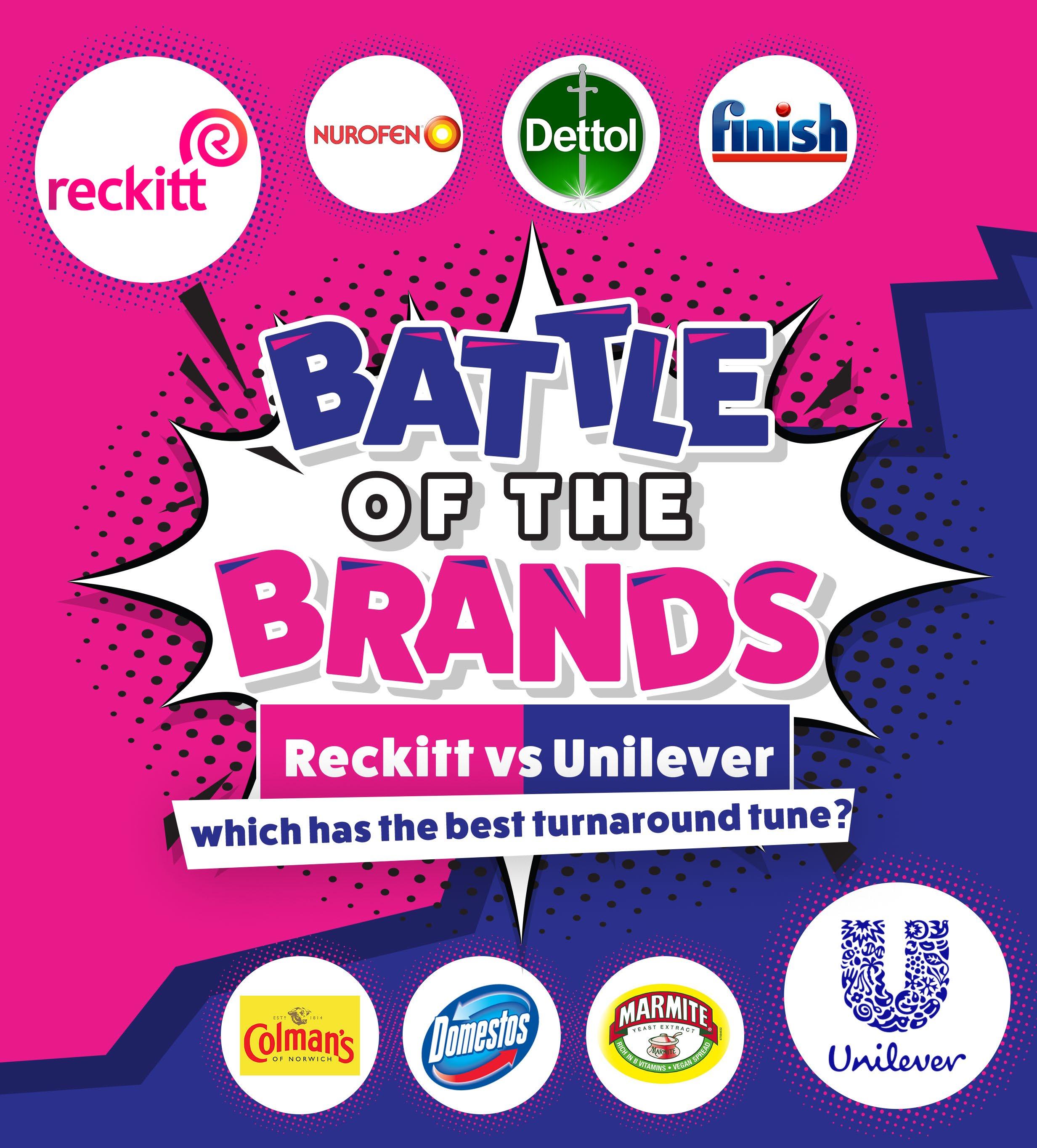

Three important things in this week’s magazine


Battle of the brands
Unilever and Reckitt are two UK consumer goods giants undergoing significant turnarounds but which is better placed?

Big tech scorecard
Examining some of the key takeaways from the large US technology plays’ first-quarter earnings.
Visit our website for more articles
Did you know that we publish daily news stories on our website as bonus content? These articles do not appear in the magazine so make sure you keep abreast of market activities by visiting our website on a regular basis.
Over the past week we’ve written a variety of news stories online that do not appear in this magazine, including:



Buffett
to retire
A key question for the Sage of Omaha’s final months in charge and for his nominated successor is what to do with a huge cash pile.



Could BP and Shell really be about to merge?
Plus we may be close to seeing the direct impact of tariffs on the US economy
If speculation about a BP (BP.) and Shell (SHEL) merger were a bowl of rice it would surely give you a monster bout of food poisoning given the number of times it has been reheated.
But BP has rarely looked so vulnerable, so it’s not a huge surprise to see rumours of Shell swooping in gather a head of steam. That vulnerability and a diminished valuation are one of the key reasons to think a deal could be on the cards.
Unlike an overseas buyer, Shell would be unlikely to face obstacles around government oversight and interference in the sale of a business which could be considered a strategic asset to the UK. BP’s activist shareholder Elliott might also welcome a deal as a way of exiting its position at a profit.
However, there is a list as long as your arm why Shell might steer clear. Yes, BP’s assets have value, but the business is in a mess and has suffered from lack of a clear strategic direction. It also has a mountain of debt which Shell would be forced to absorb – $27 billion at the end of the first quarter.
In addition, it would be very much at odds with Shell chief executive Wael Sawan’s attempts to streamline the business and make it a more efficient, returns-driven operation - an approach which has helped Shell handily outperform both BP and its big US counterparts since the beginning of 2023.
If I were a Shell shareholder I would be hoping talk of the company running a rule over BP was simply a matter of not ignoring all potential opportunities rather than a precursor to a serious plan to take over the business.
As we discussed in our news section in last week’s issue, the impact of tariffs announced in early April were always likely to take some time to feed through to the US economy as cargo ships from China made their way across the Pacific. However, we could be close to the point of seeing some first-order effects.
Berenberg’s chief economist Helger Schmieding says: ‘The full sticker shock for US consumers is not yet visible in the data, as retailers and wholesalers prepare to pass on the tariff costs. Some of it will likely show up in the inflation numbers for April once they are released on 13 May, but we also expect further price increases beyond that.
‘US household consumption depends more on imports from China than from any other country. Directly, around 1.5% of the core PCE basket (which excludes food and energy) consists of Chinese goods, roughly equal to the combined share of imports from Mexico and Canada.’
Latest payroll figures suggest US economy is on a firm footing despite tariffs
Jobs data is a lagging indicator where as surveys indicate pain is coming
For fans of the US stock market, the nonfarm payroll report for April (2 April) was the proof they needed ‘exceptionalism’ is alive and well in terms of the economy.
According to the Bureau of Labour Statistics, there were 177,000 new jobs created last month, compared with economists’ forecasts of 133,000 and a ‘whisper number’ of 120,000, meaning Wall Street was braced for a negative surprise rather than a positive one.
Before we get the flags out, however, it’s worth bearing in mind payrolls aren’t and never have been a leading indicator, they are a lagging indicator.

production down, new export orders down, sentiment about future output at a 10-month low and the first job losses in six months.
We also know trade with China is grinding to a halt, with deliveries to ports such as Los Angeles down by a third from normal levels.
According to LA port director Gene Seroka, interviewed by Bloomberg, the US supply chain has five to seven weeks’ worth of stock to get through before shortages begin to appear, but even if a deal with China were announced tomorrow ‘you can’t just flick a switch and turn trade back on’.
You can’t just flick a switch and turn trade back on”
GENE SEROKA, director, LA port
High-frequency data – such as weekly jobless claims – are also typically a lagging indicator, but it’s worth flagging the last few reports have been disappointing so it may take until next month’s payroll report for us to get a truer picture of labour market conditions.
What we do know is consumer confidence has plunged, with the Conference Board’s main index hitting a five-year low in April and the expectations index collapsing to the lowest level since 2011.
According to the Wall Street Journal, the survey included ‘an especially dark view of the labour market’.
Around a third of people surveyed said they expect there to be fewer jobs in the next six months, nearly as many as during April 2009 in the recession which followed the global financial crisis.
For middle- and low-income households, that fear of whether or not they will have a job in the next six months is stopping them from consuming, as the big retailers flagged clearly at the beginning of April and as McDonald’s (MCD:NYSE) confirmed in its latest earnings.
That pessimism is shared by business leaders, with the latest manufacturing PMI survey showing
All the while tariffs stymie exports to the US, Chinese factories are finding other buyers – as a Beijing spokesman observed, ‘other people have money too’ – and where factories are dormant, the government can afford to support workers and wait it out, so the pain is likely to be very one-sided. [IC]
US consumer confidence plummets on tariffs
Source: LSEG
The first-quarter earnings season was a mixed one for the UK’s big banks
Pick of the bunch was NatWest, with shares touching a new 14-year high
After a strong performance across the board in 2024, this year has been slightly less uniform for the UK’s Big Four high-street banks.
First to report was global bank HSBC (HSBA), which put in a good showing with underlying revenue and earnings increasing thanks mainly to its Asia-based wealth management operations, although its trading desks also made hay during the market turmoil.
The group maintained its banking net interest income guidance for the full year and announced it would buy back another $3 billion worth of shares, having only just completed its previous $2 billion buyback.
The only UK lender with an investment bank capable of taking on Wall Street titans like Goldman Sachs (GS:NYSE) and Bank of America (BAC:NYSE), Barclays reaped the benefit of increased stock market volatility with outsized gains from its bond and currency trading operations.
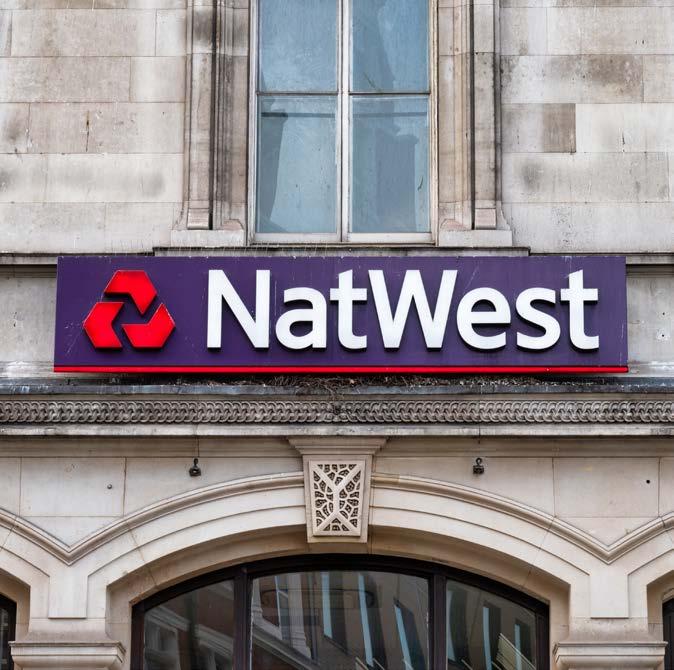
Next up was Barclays (BARC), which posted better-than-expected earnings, raised its full-year outlook and confirmed it would return £10 billion or almost a quarter of its market cap to shareholders in the form of dividends and share buybacks, with a preference for the latter.
Source: LSEG
It also benefited from strong demand for loans and mortgages in the UK, raising its full-year net interest income target by £300 million to £12.5 billion.
It was a less successful reporting season for the UK’s largest mortgage lender Lloyds (LLOY), which reported a 13% drop in underlying profit due to higher operating costs and increased impairment charges which more than offset an improvement in the net interest margin.
Costs rose 6% reflecting inflationary pressures and business growth, together with higher severance costs, while provisions for bad loans swelled from £57 million to £309 million.
On a positive note, the bank didn’t increase its provisions for motor finance commissions, which currently stand at £1.15 billion after it put aside £450 million in 2023 and another £700 million last year.
Saving the best till last, NatWest (NWG) delivered first-quarter operating profit no less than 18% above the consensus thanks to a combination of strong mortgage demand, a better net interest margin and gains at its investment banking business.
NatWest also surprised with its cost-to-income ratio, which dropped to 48.6% from 58.4% a year ago and makes it the leanest of the Big Four, although it maintained its estimate of full-year running costs meaning there was little room for analysts to tweak their forecasts.
That said, the bank raised its total income and return on tangible equity targets to the top of their respective ranges sending the shares to a 14-year high briefly. [IC]
13 May: Angling Direct, Bytes Technology, Diaceutics
14 May: Burberry
15 May: 3i Group, National Grid, Premier Foods, United Utilities FIRST-HALF RESULTS
12 May: Victrex
13 May: On The Beach, Renew Holdings, Treatt
14 May: Britvic, Compass, Victorian Plumbing
15 May: Auction Technology, Grainger, Imperial Brands, Nexus Infrastructure, Sage

9 May: International Consolidated Airlines
Can Burberry buck the luxury sector malaise with its full-year results?
The industry has been struggling due to softening consumer demand in US and China
Investors maybe pinning their hopes on a glimmer of recovery in the luxury goods sector when UK fashion house Burberry (BRBY) reports its results for the 52 weeks ending 29 March on 14 May.
The sector has been struggling due to weakness in the largest luxury goods markets – US and Chinawhich has been compounded by Trump’s tariffs.
On 15 April French counterpart LVMH (MC:EPA) reported weakerthan-expected first quarter sales mainly due to softer demand in Asia. LVMH shares fell 7% to a four-year low of €495 on the news.
The French multi-national luxury goods specialist Kering (KER:EPA) also reported disappointing first-quarter sales with a 25% drop at flagship label Gucci due to a ‘weakening backdrop’, according to Jefferies’ analysts.
Kering’s shares fell 5% after this trading update and have fallen 26% year-to-date.
Burberry’s outlook doesn’t look pretty if we consider these updates from its larger peers and its significant exposure to the Chinese market. However, in its last trading update in January, the luxury firm upgraded its full
year 2025 operating profit guidance, despite reporting a 4% fall in thirdquarter revenue. Notably this was before the Trump administration upended things with its new trade policy.
The company has also initiated a brand reset with 360-degree ‘It's always Burberry weather’ outerwear campaign which has caught the attention of Morningstar's senior equity analyst, Jelena Sokolova.
‘We also support the desire to appeal to a wider consumer audience versus a niche, fashion-driven strategy the brand was pursuing before,’ says Sokolova.
Elsewhere there has been speculation about current creative director Daniel Lee leaving the business, a question which may be raised when the company engages with the market alongside its full-year numbers. [SG]

Can Walmart mitigate tariff-related price shocks?
The world’s biggest retailer could emerge from the current fog with an even greater market share
Trade war uncertainties are weighing on sentiment towards consumerfacing stocks, and investors will be able to take the temperature of the all-important US consumer when Walmart (WMT:NYSE) reports firstquarter earnings on 15 May.
Given the world’s biggest retailer’s sheer scale it should be able to grab greater market share by absorbing some of the pain from tariffs and widening the price gap to its competitors.
Investors should see evidence of further market share gains in groceries and general merchandise from Walmart, which despite the volatile consumer backdrop, reaffirmed its 3% to 4% first quarter sales growth guidance at its ICM (Investment Community Meeting) on 9 April.
Reassuringly, Walmart left full-
year 2026 sales and operating profit growth guidance unchanged although the first-quarter range was widened due to prevailing uncertainties including ‘the desire to maintain flexibility to invest in price’ as tariffs are implemented.
‘History tells us that when we lean into these periods of uncertainty, Walmart emerges on the other side with greater share and a stronger business,’ commented chief financial officer John David Rainey at the investor meeting.
One of the few retailers capable of competing with Amazon (AMZN:NASDAQ), Walmart is undergoing a technology transformation which analysts at Jefferies believe could drive highsingle-digit to low-double-digit percentage annualised operating profit growth.
Source: Investing.com
‘Walmart should continue to gain market share and leverage technology, AI, and alternative revenue streams to improve margins,’ argues the broker. [JC]

QUARTERLY RESULTS
12 May: Fox Corp, Simon Property
14 May: Cisco
15 May: Applied Materials, Deere & Company, Walmart


Source: LSEG
Source: Company data, Business of Apps
details, this is very market sensitive stuff, but it has been previously speculated by experts in the music industry that the average royalty payout per stream lands somewhere between $0.006 and $0.0084, depending on the artist, track or podcast.
WHY DO WE LIKE IT
It’s a big opportunity. Consider, YouTube has more than 2.5 billion active users, according to Statista data from February 2025, and while not strictly comparable, it too offers users a so-called ‘freemium’ model, where users can get free, adsbacked access to content, or choose to pay for an ads-free subscription.
The platform currently charges roughly $12 a month in the US, £12 in the UK, but prices are lower elsewhere. This is useful info for a few reasons; first, Spotify is expected to push through global price rises over the coming month to close the price parity gap, which is good for future revenue. Second, regular price rises are built-in to the business model, but not so most analyst estimates, which provides forecast outperformance potential down the line.
A Spotify subscription remains a relatively lowticket item, but one highly valued by users, which makes it less likely that subscribers will pull the plug even when they are relatively cash-strapped, a point Shares has made about Netflix too.
RECESSION RISKS
Of course, if we are plunged into a global recession, as some fear Trump’s economic policies might,
Spotify is expected to push through global price rises over the coming month to close the price parity gap, which is good for future revenue”
Spotify’s growth will likely moderate from current expectations, as will its ad revenues. A rolling 12-month PE (price to earnings) multiple above 50 leaves a lot of room to de-rate.
Even so, the essence of Spotify’s defensive qualities are a major reason why so many analysts like the stock in spite of current uncertainties.
According to Stockopedia data, 25 of the 32 analysts that follow the stock have it as a ‘buy’ or ‘strong buy’, with just a single ‘sell’ recommendation.
If current forecasts are on the money, it would imply an average 16% a year revenue growth over the next few years, but a far faster rise in profits as margins rapidly strengthen. Net profit margins were approximately 7.3% in 2024, according to Stockopedia, but are set to firm to 10.2% and 12.8% this year (to end December) and next. It implies 2024 EPS (earnings per share) of €5.67 could grow to €9.21 and €12.80 over the next two years, and higher still beyond.
Investors should think carefully about the risks, volatility in markets can make for uncomfortable times for higher rated stocks. But we believe this is a long-run expansion story with considerable defensive qualities growing far faster than market averages, and thus warrants a premium valuation. [SF]

Why bombed-out sustainability investor Impax Asset Management could see a big bounce
A single-digit PE ratio implies a lot of bad news is discounted in the share price
Impax Asset Management (IPX:AIM) 150.1p Market cap: £193.6 million
ESG (environmental, social, and governance) investing has not been front of mind for many investors since the end of the pandemic as rising interest rates, inflation and the cost-of-living crisis have taken centre stage.
Leading specialist asset manager Impax Asset Management (IPX:AIM), which is focused on investing in opportunities arising from the transition to a sustainable global economy and climate change, has born the brunt of investor neglect.
In late 2021, the shares were riding high and briefly touched £14.60 but the brutal fall from grace has seen them sink to as low as 121p at the end of April.
This de-rating of the stock means the PE (price to earnings) ratio for expected earnings to the end of September 2025 has dropped to 6.6 times compared with 32 times in 2021.
Adjusting for the circa £100 million of own net cash sitting on Impax’s balance sheet, the 2025 PE multiple falls to a miserly 4 times earnings per share.
Despite the recent (8 April) profit warning
Source: LSEG
which revealed a 26% drop in AUM (assets under management) at the half year, principally from a £5.2 billion redemption from one of Impax’s biggest clients St James’s Place (STJ), we believe the investment risks are low while the chances of a bounce-back are high.
From a longer-term perspective, we believe such a low valuation is unsustainable and is likely to attract a predator or opportunistic buying from institutions. After all, Impax has displayed all the
shares recover from turbulence on buyback and reassuring trading update
airline and package holidays provider’s customer first approach pays off
We included Jet2 (JET2:AIM) in our list of stocks to buy for 2025, noting an undemanding valuation and scope for expansion, and at first that looked like it might have been an error.
WHAT HAS HAPPENED SINCE WE SAID BUY?
However, the package holidays provider provided a positive catalyst for the share price on 29 April by announcing a £250 million share buyback and confirming it expected its full year 2025 results to be in line with guidance.
The company sees a group profit before foreign exchange revaluation and taxation for the year ending 31 March 2025 of between £565 million

and £570 million.
The buyback was a reflection of an extremely strong balance sheet. Total cash of £3.2 billion includes money taken from customers when booking holidays but even if we just look at its own cash this totals £1.1 billion as of 31 March 2025.
Jet2 also said at the end of April that it had launched new bases at Bournemouth and London Luton airports due to ‘encouraging’ demand.
WHAT SHOULD INVESTORS DO NOW?
Jet2 shares are now comfortably ahead of our entry point. The airline and package holidays provider seem to have got its strategy right when it comes to looking after its customers and growing its market share.
We think investors should hold on to the stock for now. Analysts at Canaccord Genuity said in a recent note that the company offers ‘strong customer trust’ and ‘flexibility at a predictable all-in cost.’
Adding: ‘[Jet2] holidays offer scope to deliver a more sustainable EPS (earnings per share) and expand achieved PE (price to earnings) as investors focus on the value of holidays.’
Source: LSEG
Canaccord sees its full year 2026 pre-tax profit outlook a ‘touch higher’ due to the company’s ‘fortress balance sheet’ and ‘end-to-end’ customer care. [SG]
Small companies, big opportunities
Investing in UK smaller companies presents a compelling opportunity for investors seeking long-term growth and diversification. These companies are typically more agile and innovative than their larger counterparts. Their smaller scale allows them to pivot quickly, seize emerging opportunities, and capitalise on niche areas within key sectors, such as technology, finance, professional services and healthcare, which are helping to drive the economy.
One of the key advantages of investing in smaller companies is their potential for higher returns. Historically, smaller companies have outperformed larger ones over the long term, benefiting from their ability to grow revenues and earnings at a faster pace. While they are perceived to carry higher risks due to factors like market volatility and limited resources, these risks can be mitigated through careful
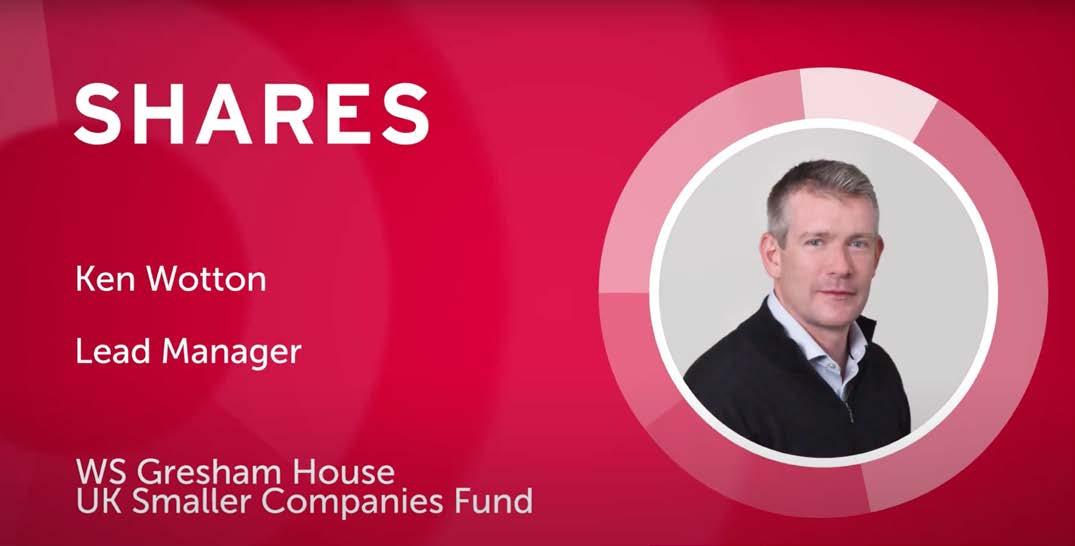

stock selection, active engagement and diversification.
The UK market offers a particularly fertile ground for smaller companies due to its entrepreneurial culture, robust regulatory framework, and access to global markets. Despite recent challenges many have leveraged their innovative capabilities to address new market demands, ranging from digital transformation to sustainable business practices.
Our WS Gresham House UK Smaller Companies Fund is well-placed to benefit from structural growth themes across various sectors.
Managed by Ken Wotton and Cassie Herlihy, and our specialist UK equity team, they look across the small cap market and target companies with high-quality financial metrics at what they consider to be attractive valuations. By focusing on companies whose long-term earnings growth and cash generation are largely independent of external economic forces, the Fund aims to provide returns less correlated to broader market or economic developments. Negative sentiment has widened the disconnect between share prices and underlying business fundamentals. This means that many well-run businesses are now trading at low prices providing attractive opportunities for managers to deploy capital.
WS Gresham House UK Smaller Companies Fund is a high-conviction, concentrated fund that looks to grow capital over the long term (in excess of five years).
PAST PERFORMANCE IS NOT A GUIDE TO FUTURE RETURNS
How did latest US mega-cap tech earnings shape-up?
Key takeaways include strong profit, more AI investment and little sign of recessionary pullback (for now)
If we’re in for leaner times as recession risks rise, it’s quarters like this that will remind investors not to bet against big tech. We’ve now had latest quarterly numbers from Apple (AAPL:NASDAQ), Amazon (AMZN:NASDAQ), Meta Platforms (META:NASDAQ) and Microsoft (MSFT:NASDAQ), led by Alphabet (GOOG:NASDAQ) previously (24 April), and they are leading US markets higher with vigour.
Both the S&P 500 and Nasdaq have all but wipedout losses braved by investors since Donald Trump’s tariffs bombshell on ‘Liberation Day’ (2 April) thanks to earnings beats, largely confident outlooks, and firm reminders that these companies are built to prosper against all kinds of market backcloths.
Investors were hoping for reaffirmed optimism that the AI wheels are not coming off and got it. That huge AI investment was paying off, check. That talk of possible recession hadn’t blown a hole in online advertising spending, tick. And that Trump’s tariffs policies are not ripping chunks out of revenue streams. That was largely a check, with the caveat that the big tech players with most consumer
US

megatech performance vs expectations





Source: LSEG
spending exposure – namely Apple and Amazon – remain wary given the current uncertainty surrounding the health of the US economy.
TRADE TENSION IMMUNITY
They face growing pressure from trade tensions and shifting spending patterns, and if a recession does emerge, there will be impacts on advertising budgets and consumer spending, and some

readjustment even if not.
A wider note of caution is these earnings, while undoubtedly a positive, all related to a three-month period before most of the tariff action took place.
‘Apple quantified the impact of the tariffs as a $900 million (extra cost) next quarter, around one percentage point of margin,’ said Matt Ward, co-manager of the AXA Framlington Global Technology Fund (B4W52V5), ‘and Amazon took a similar sized margin hit this quarter on inventory pull forwards.’
To sidestep some of the tariffs harm, Apple has been shifting significant iPhone manufacturing from China to India, although this plan was in place long before Trump’s re-election anyway. Amazon’s online shopping platform is its most visible part and sourcing an estimated 25% of the products it sells there come from China, the company’s caution is understandable, but Amazon’s cloud computing business AWS is the company’s real growth driver.
There may have been some disappointment that unlike at Microsoft and Alphabet, growth for the first three months of the year in this part of the business was a smidge below expectations.
Capital spending is continuing, and overall spending plans among the hyper-scalers, large cloud service providers that offer massive computing resources, storage, and networking infrastructure to support enterprise-scale applications and services, have increased this quarter, despite fears of cuts. As
Valuation compression in big tech this year





Source: Koyfin
noted by Morgan Stanley this week, estimates for capex growth in 2025 among the US cloud hyperscalers have increased from 31% to 38% over the last month despite fears of spending being cut in a more uncertain macro environment.
Amazon CEO Andy Jassy, reminded markets of the nascent stage of the cloud transition so far, saying on the conference call that: ‘It’s useful to remember that more than 85% of the global IT spend is still on premises, so not in the cloud yet.’
SPENDING TAPS RUN HOTTER
Meta has been reaping the benefits of AI integration across its business, helping to direct
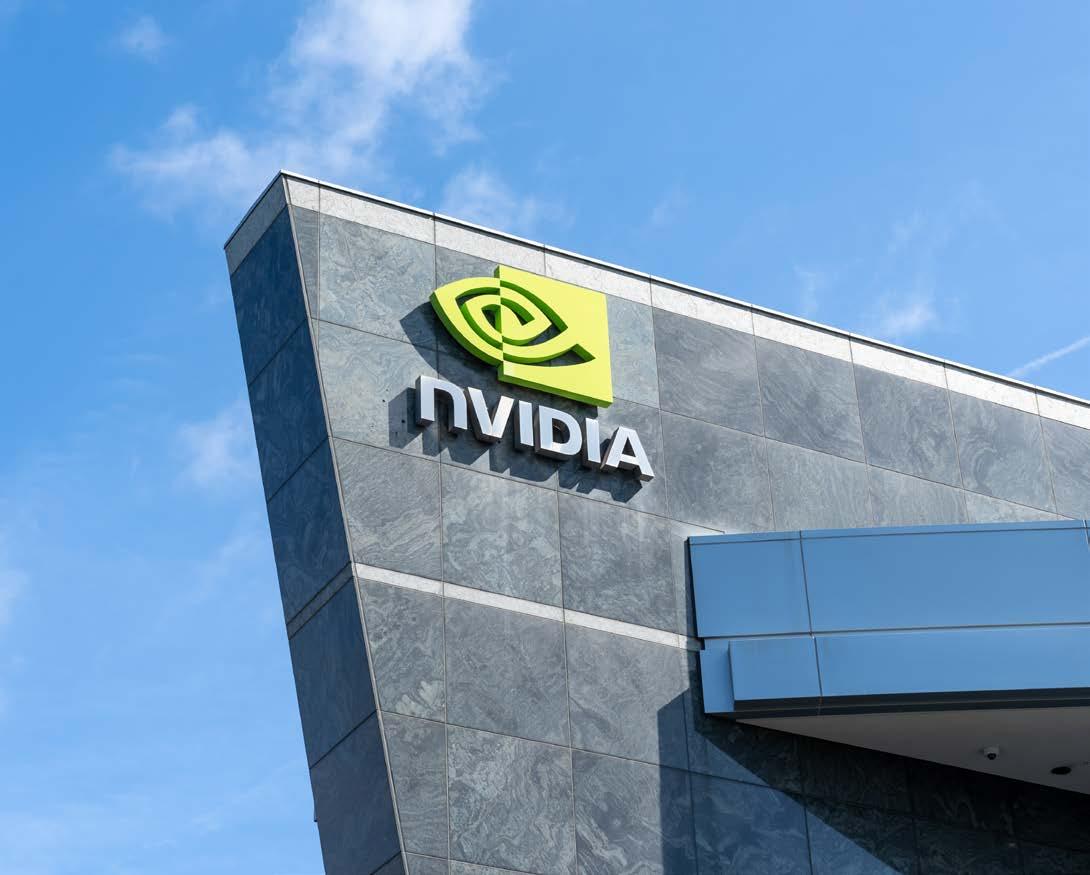
more relevant content to users, thus keeping them engaged and serving up more relevant ads, yet upping its already hefty AI investment capex, from $62.5 billion in January to $68 billion, at the midpoint of ranges, is a big rebuff to those that thought AI spending might tail off.
Hyper-scaler cloud/AI platforms continue to talk of capacity constraints limiting growth this quarter, while Microsoft mentioned intra-quarter pick-ups in demand and continued increases in the contribution of AI to growth. ‘We think the commentary this quarter bodes well for continued spending growth through 2025,’ said AXA’s Ward.
If latest quarterly reports tell us anything it is that valuation compression is behind sluggish share price performance this year, not growth and earnings. The performance of Alphabet, Amazon, Apple, Meta and Microsoft has averaged -8.7% year to date, while average next 12-month PEs (price to earnings) have fallen 14%, from 29.8 at the start of 2025 to 25.6 now.
Chip designer Nvidia (NVDA:NASDAQ) will post its next quarterly results on 28 May, and assuming they project more positives, they could cement renewed optimism around AI and tech.

By Steven Frazer News Editor

The merits of a true investment journey
Gabriel Sacks , Co-Manager of abrdn Asia Focus plc
More so than ever before, data is regarded as the lifeblood of investment decisions. There is a a genuine superabundance of it, and cutting-edge technology means it can be processed with increasing speed and effectiveness.
Against this backdrop, the notion of direct engagement with investee companies may seem hopelessly passé. Why make some kind of personal pilgrimage to a business when enhanced disclosure and artificial intelligence can handle all the “heavy lifting”?
Imagine, for example, a cab squeaking to a halt outside a rather shabby-looking factory in an emerging market (EM) country. Out steps a somewhat dishevelled figure who has travelled thousands of miles by plane, train and taxi to get here.
The character in question is a fund manager. He believes in having an on-the-ground presence in the region in which he and his colleagues invest, which is why he has journeyed to this out-of-the-way location and this vaguely delipidated facility.
Seriously, what does he hope to accomplish? How can he expect to learn anything that could not be more easily discerned by analysing the swathes of information this company must supply to anyone who expresses an interest?
Well, the somewhat dishevelled figure was me. And what I learnt was that behind the shabby façade

was a business eminently capable of profiting from some of the most important economic and demographic long-term trends in Asia.
Such an experience is far from unusual. Equally, I have visited plenty of conspicuously plush offices and discovered the companies within them fall a long way short of such opulent surroundings and should therefore be avoided at all costs.
The point is that quantitative analysis can sometimes tell us only so much. The qualitative aspects of a business might prove every bit as significant in determining whether
an investment is likely to succeed or fail.
There are numerous issues that could demand attention. They might include a company’s strategy, its inherent agility and adaptability, its capacity for continued innovation and even the strength of the relationships between its senior executives.
In the experience of our team, which operates throughout Asia, this is why “being there” can still have great value. The three overarching considerations below particularly lend themselves to favouring such an approach.

DIGGING DEEPER
Wherever it may be, a company might not always project an image that mirrors the reality of its situation. We have already seen how this problem can manifest itself in a business’s premises, but it can apply much more widely.
Take financial statements – what we might think of as the corpuscles of the aforementioned lifeblood. Do accounting profits, often adjusted by the management team, translate to healthy cashflows? Even if they are perfectly accurate, they may not reveal the full story.
For instance, evidence of short-term underperformance might obscure the possibility of longer-term growth. On the other hand, page after page of jaw-dropping stats could disguise the underlying inadequacies of a management team that lacks a decent plan for the way forward. Face-to-face meetings provide a powerful means of digging deeper and discerning the whole truth.
APPRECIATING EACH COUNTRY’S UNIQUENESS
Culture has long been acknowledged as a key driver of corporate performance. Yet it is vital to recognise it differs not just from company to company but from nation to nation.
Every country’s unique history, attitudes and even eccentricities can play a part in investment decisions. This is perhaps most notably the case in a region such as Asia, where
Important information
• The value of investments, and the income from them, can go down as well as up and investors may get back less than the amount invested.
• Past performance is not a guide to future results.

many aspects of day-to-day life – not least in the professional sphere – are markedly dissimilar to those in the West.
Take South Korea, where business dealings generally entail a delicate synthesis of extreme politeness and strict observance of hierarchy. As investors, we need to understand the nuances of such “normals” and appreciate how they are reflected in what a company says and does.
EXPLORING THE UNKNOWN
Even though we live in an era of ever-improving governance and everaccelerating technological progress, thousands of good businesses consistently escape the notice of the broader investment community. This is because transparency and processing power can count for little – and even for nothing – if a company is simply overlooked.
• Emerging markets tend to be more volatile than mature markets and the value of your investment could move sharply up or down.
Other important information: Issued by abrdn Fund Managers Limited, registered in England and Wales (740118) at 280 Bishopsgate,
This is frequently the fate that awaits some of the brightest opportunities in Asia, as well as those in EMs around the globe. Maybe above all, promising smaller businesses routinely go unremarked. Most investment analysts are too bound up in the proven attractions of mega-cap organisations in the US and other major regions – or it may be that third-party research houses can afford to cover only the most liquid stocks in any given market.
As a consequence, the job of unearthing hidden gems is likely to lie with specialist teams. Their indepth knowledge should stem from an extensive first-hand appreciation of the places, people, practices and policies that help shape genuinely informed investment choices in some of the world’s fastest-growing and most fascinating economies.
London EC2M 4AG. Authorised and regulated by the Financial Conduct Authority in the UK.
Find out more at www.Aberdeen.com/aas or by registering for updates
You can also follow us on social media: Facebook, X and LinkedIn.
Unilever – Key details
Ticker ULVR
Share price
Market cap

£46.69
£117.5bn
FTSE subsector Personal Products
Source: Shares magazine
and like its rival, boasts a formidable brand portfolio, though it has felt the pain from the public trading down in recent years to supermarket own-brand or cheaper alternatives amid the cost-of-living squeeze.
Reckitt Benckiser is also prioritising its strongest brands, a portfolio dubbed ‘Core Reckitt’ and spanning 11 consumer health and hygiene ‘Powerbrands’ including Mucinex, Strepsils, Gaviscon, Nurofen, Lysol, Dettol, Harpic, Finish, Vanish, Durex and Veet. These are its strongest brands and drive over 80% of Reckitt’s net revenue, while the non-core Essential Home portfolio up for sale includes Air Wick, Calgon and Cillit Bang.
Reckitt Benckiser’s operating margins are expected to improve in 2025, driven by cost savings from CEO Kris Licht’s Fuel for Growth turnaround strategy. In common with Unilever, Reckitt Benckiser has a highly cash generative business model which supports ongoing dividend growth. Investment bank Berenberg says the potential disposal of Essential Home could result in a special dividend and/or a share buyback programme in 2026.
Risks to consider include tough competition and waning consumer confidence in the US, where the impact of tariffs needs to be monitored, since North America spoke for 26% of Core Reckitt sales in 2024. And it is worth noting that the company’s Nutrition business has yet to recover from the share losses sustained on the back of last year’s Mount Vernon tornado-related supply disruption.
Reckitt Benckiser – Key details
Ticker RKT
Share price
Market cap
£47.40
£31.9bn
FTSE subsector Nondurable Household Products
Source: Shares magazine
HOW ARE THE BUSINESSES PERFORMING?
On 24 April, Unilever reported marginally better-than-expected first quarter sales thanks to robust demand for its beauty, personal care and ice cream products. Driven by volume and price, underlying sales growth of 3% marked a slowdown from the 4% generated in last year’s fourth quarter, but the performance was solid enough in the context of the tougher market conditions and the private label competition facing the company.
The deodorants-to-dishwasher tablets maker reiterated its full-year guidance and Fernandez sounded confident that growth will improve as self-help measures take hold in emerging markets such as Indonesia and China.
‘First quarter underlying sales growth of 3% reflects the strength of our increasingly premium and innovation-led portfolio in developed markets. We have interventions in place in some emerging markets to step up growth in the remainder of the year,’ added Fernandez.
First-quarter figures (23 April) from Reckitt Benckiser revealed subdued group like-forlike growth of 1.1% and offered evidence the US consumer is feeling less than healthy as the numbers missed expectations. The good news was Reckitt Benckiser stuck with its full-year 2025 guidance for 3% to 4% like-for-like sales growth in Core Reckitt, though hitting this target could prove a
stretch given US household spending was already under pressure even before the impact of the current US trade policy had been felt.
It was no surprise that most of the company’s growth came from emerging markets, where the threat posed by unbranded alternatives is less and where, for reasons of quality and safety, shoppers will stick with familiar names where possible.
WHICH STOCK SHOULD YOU BUY NOW?
As Stockopedia data demonstrates, both Reckitt Benckiser and Unilever have the hallmarks of quality companies with wide economic moats, evidenced by a double-digit return on equity (ROE) and return on capital employed (ROCE). Unilever’s returns on these quality metrics are superior, which in part explains why its shares have dramatically outperformed Reckitt Benckiser’s over the past decade.
Innovation is a key source of competitive advantage for the latter, which manufactures science-backed health and hygiene brands that consumers trust and will pay up for, even
when times are tough. As the tables provided show, Reckitt Benckiser’s pricing power is reflected in a gross margin of 60.7% in 2024, up 70 basis points on 2023 and comfortably ahead of Unilever’s 2024 gross margin of 45%, albeit from a different product mix.
Reckitt Benckiser’s operating margin is also richer than Unilever’s, though the latter is seeking to close that gap through its massive efficiency drive. The former’s shares are cheaper on a prospective price-to-earnings (PE) basis, swapping hands for less than 14 times forward earnings versus 18 times-plus for Unilever, one reason why the bargain-seeking investment trust Fidelity Special Values (FSV) has popped up on the shareholder roster.
Key drivers of the valuation discount are concerns over rising competition across Reckitt Benckiser’s main categories, including increased price promotions by rivals, and the major risk of litigation amid accusations that its Enfamil infant formula failed to warn of the danger of necrotising enterocolitis among premature newborns who consumed the product. A mountain of
UNILEVER IN NUMBERS Breakdown by product
Q1 sales – regional

Source: Unilever Q1 presentation





How
I manage my pension investments, or ‘knowing your limitations’
Failed attempts at chasing gains have made me a firm believer in compounding
As I’ve explained in previous articles, I’m an income-focused investor rather than someone who chases capital gains.
The decision to focus on income comes down to two factors – first, it’s not easy to find stocks which can guarantee you capital gains, whereas over the years I’ve bought several stocks which have done just the opposite and generated big losses very quickly; and second, the power of compounding never ceases to amaze me as without lifting a finger my interest earns interest.
You could put it down to age, although I decided to alter my approach some time ago, and while my pension may not have kept pace with the ‘Magnificent Seven’ or the Nasdaq – I don’t know

many people whose pension has, in fairness – not only has it kept pace with inflation, it has held up well in times of market turmoil.
OBSERVING THE FIRST RULE OF MAKING MONEY
Given the first rule of making money is not to lose money, the fact my pension pot has not just held its

own but has grown in value this year is a big comfort.
There’s no great secret to how I manage my investments – it’s a mixture of regular contributions into my SIPP, regularly reinvesting dividends and adding to a few ‘copper-bottomed’ growth stocks on pullbacks.
Contributing regularly to a pension is crucial, and the sooner you start the better as investing for retirement is a long process which can’t be rushed.
With this regular inflow of money, and with my cash ‘reserve’, I make fixed monthly investments in a couple of core holdings, a process known as ‘pound-cost averaging’.
If prices are up one month, I buy less shares, if they are down the next month I buy more shares, it’s that simple.
One of my core holdings is a global equity fund which has generated a higher rate of return each year than I could ever hope to achieve by myself, even if it hasn’t necessarily beaten the index.
Another is a fixed income fund which pays interest monthly, so by making a regular investment I’m turbo-charging the compounding process, buying more shares with capital and interest, while I have the opportunity.
Having said at the start I no longer chase capital gains, I do own a handful of stocks which I believe are attractive growth companies with huge addressable global markets, trading at a fraction of their intrinsic value, and which I expect to double or treble over the long term.
From time to time, when markets allow thanks to a sharp sell-off, I add to these stocks, but I don’t profess to be an expert in market timing and very rarely do I pick the low.
What I am doing, however, is backing my winners and increasing my bet when others may be giving in to doubt and selling – a long-term mindset is key, and as long as nothing has changed with your original investment case, all investors should have the courage to buy on a correction.
KEEPING SOMETHING IN RESERVE
I have a small cash ‘reserve’, which I referred to earlier and which allows me to add a stock or a fund to my pension if it looks really compelling, but the number of compelling ideas out there is very small and it’s rare that I add a new name.
The exception to this rule is when a company or fund I own is taken over and I have to redeploy the cash I receive.
Frankly, I would rather none of my holdings were taken over as more often than not bidders are opportunistic and the long-term returns I have factored into my thinking are thrown out the window or at the very least brought forward by several years.
Finally, the bulk of my pension looks after itself as it is invested in stocks and funds with instructions for the dividends to be automatically reinvested given I don’t need the income for several years. What I will need to do going forward is to rebalance my investments so the monthly dividend stream is more evenly distributed and less ‘lumpy’ than it is at present.
That involves increasing some holdings and decreasing others depending on when dividends are paid, so when I do come to retire I have a steady monthly income which allows me to budget for my expenditure without having to dip into my capital at any point.
Naturally, this approach won’t work for everyone and most people will have their own ideas about managing money as well as their own skillset which they can bring to pension investing.
However, I’m mindful of past mistakes and am happy to let the ‘eighth wonder of the world’ do most of the heavy lifting for me – as Dirty Harry says in the classic 1973 film Magnum Force, a man’s got to know his limitations.

By Ian Conway Deputy Editor


Amonth has passed since Donald Trump’s Liberation Day tariff announcement. In that period, we’ve seen financial markets tumble and, for most parts of the world, fully recover. If you’d been on holiday for those four weeks and not looked at your portfolio or the news, you might not realise anything had happened.
Yet those four weeks could go down in history as
being a pivotal moment for markets. Not because of the brief slump in asset values, but for triggering a potentially significant shift in investors’ mindset towards exposure to the US.
Investors have been happy to pay a premium for US shares relative to other parts of the world such as Europe and Asia over the past decade or so. At the start of 2013, the S&P 500 traded on the same 12.5-times multiple of earnings as the MSCI World

How the US compares to other parts of the world on performance and valuation
How the US compares to other parts of the world on performance and valuation
Source: AJ Bell, LSEG. Performance data 1 Jan 2025 to 2 May 2025 8am BST. PE data as of 30 April 2025
Source: AJ Bell, LSEG. Performance data 1 Jan 2025 to 2 May 2025 8am BST. PE data as of 30 April 2025
index, a popular benchmark for the global stock market. The FTSE 100 traded on 11 times earnings, a slight discount.
In 2016, the gap between all three indices started to widen and that’s continued since. At the start of 2025, the S&P 500 traded on 22.3 times 12-month forward earnings estimate, compared to 19.5-times for the MSCI World and 11.2-times for the FTSE 100. Investors were happy to pay nearly twice as much for a US share as an UK one.
You have to go back to 2002 until 2007 to see a period when US equities last underperformed the global market on a consistent basis. Anyone who started investing in the past 10 to 15 years won’t have known a period where US shares struggled badly for a long time.
Over the past 15 years, the S&P 500 has returned 476% including dividends versus 303% from the MSCI World, according to data from FE Fundinfo. These performance figures might give you the impression the US is a guaranteed money maker but that is certainly not the case if you look back in history.
WHY APPETITE FOR THE US MIGHT WEAKEN
Markets fell after the Liberation Day speech in April 2025 because investors worried about tariffs backfiring and causing damage to the US economy, instead of strengthening it.
It’s prompted certain investors to think hard about their portfolios and wonder if they’re too


reliant on the US for returns. Even someone who has a global equity tracker fund and not a US-specific fund will still have significant exposure to that part of the world – they might not realise unless they look under the bonnet of their portfolio.
The superior performance from US equities, particularly big tech companies, in recent years has increased the weighting of the US in the MSCI World index to account for approximately three quarters of the entire global market. That’s double what it stood at in the 1980s.
Whether it’s being prudent about not being overexposed to one region or disagreeing with Trump’s policies and worrying about long-lasting damage to the US economy, there is a growing list of reasons why someone might be thinking about dialling down US exposure.
The big question is where will investors turn to? Cheaper valuations are a natural starting point. The UK market is still cheap, so is Japan, China and emerging markets in general. Is it a coincidence these territories have been among the best performing markets year-to-date? Possibly not.
Germany, Brazil and Hong Kong have all delivered 10%+ returns so far in 2025 whereas the US is in the red and the worst performing major market.
Speaking on AJ Bell’s Money & Markets podcast, Peter Fitzgerald, chief investment officer, Macro Discretionary at Aviva Investors, remarked: ‘We need to be open to a period where US assets lag those of the rest of the world.
‘The globe is over-invested in US assets,’ he added. ‘I don’t think it would take a huge amount to see a period whereby that rebalances.’ He says the MSCI World global benchmark being 72% invested in the US is ‘not a balanced benchmark’ and believes it should be less than 50%.
AN EQUAL-WEIGHTED OPTION
This situation might prompt investors to look at equal-weighted tracker funds, a type of investment that is growing in popularity as they reduce concentration risk.
Certain investors might be familiar with the concept. For example, an S&P 500 tracker fund might be heavily exposed to a handful of mega cap tech names like iPhone seller Apple (AAPL:NASDAQ) and cloud computing-to-gaming
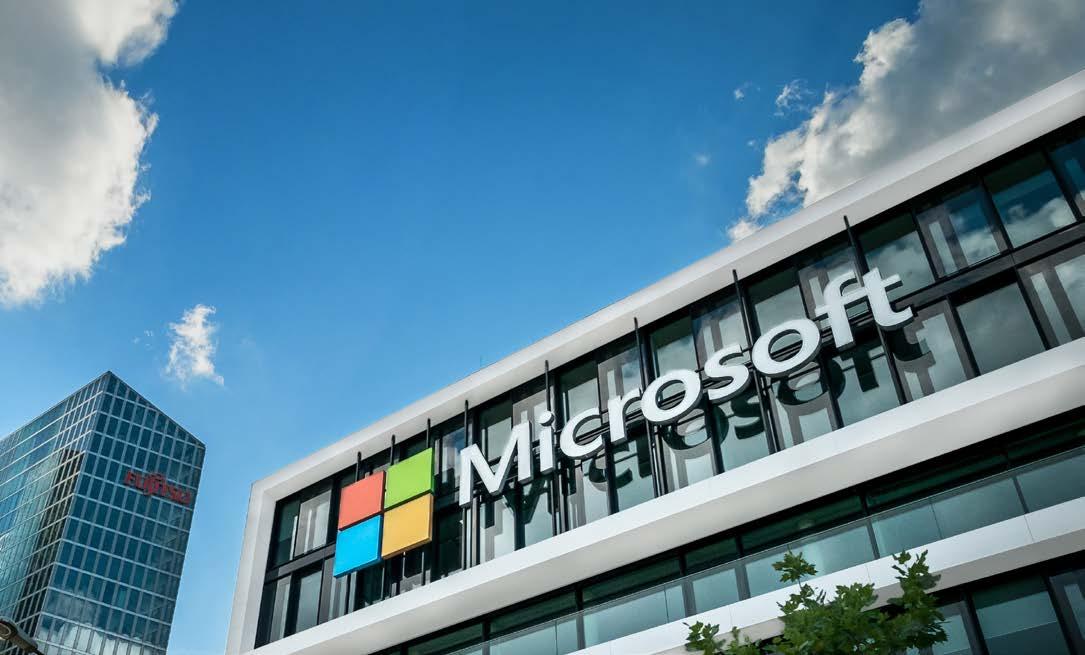
giant Microsoft (MSFT:NASDAQ) because they are dominant names in the underlying market capweighted index. An equal-weighted version of that US index would have the same amount of exposure to all constitutes in the index.
An equal-weighted fund tracking the MSCI World index works in the same way, to a point. You might think such an index spreads the asset allocation equally between countries around the world, which would solve the problem of the US being overly dominant. It doesn’t quite work that way.
The equal-weighted version takes the same companies that belong to the ‘normal’ version of the MSCI World – 1,352 large and mid-cap stocks from 23 developed market countries – and once a quarter rebalances so they each member represents a same-sized slice of the cake.
Whereas the ‘normal’ version of the MSCI World currently has a 72% weighting to the US, the equalweighted version of the index has 41.7%. Someone invested in this version of the MSCI World index would effectively still have exposure to the US, but significantly less reliance compared to the ‘normal’ version.
There are other ways of reducing exposure to the US such as trimming positions in US-specific funds or putting new money into non-US assets. Each investor will choose their own strategy, and it will be fascinating to come back in a year’s time to see if the great rotation has happened, or whether investors’ addiction to the US was just too strong to give up.
DISCLAIMER: AJ Bell referenced in this article owns Shares magazine. The author (Dan Coatsworth) and editor (Tom Sieber) of this article own shares in AJ Bell.

I’m approaching 75 and thinking about how to use my tax-free allowance
Helping with a question about taking lump sums out of a retirement pot
I’m approaching 75 & thinking about the 25% tax-free allowance.
I’ve already taken the 25% from my SIPP. But I also have two stakeholder pensions of about £250,000, and I’m considering taking the tax-free portion and paying it into family ISAs.
I assume dying before 75 would be beneficial, tax-wise, but I’d prefer not to.
Ian

ORachel Vahey,
AJ Bell Head of Public Policy, says:
ne of the most attractive tax perks of pensions is the ability to take up to 25% of the pension pot as a tax-free lump sum (or pension commencement lump sum (PCLS)) once you reach age 55 (increasing to age 57 from April 2028).
Last year the rules on pensions changed. Now, only the amount withdrawn as tax-free lump sums are measured against a limit. The amount you withdraw as income isn’t measured, allowing you to build up a pension pot of any size, withdraw it all as income, with no additional taxes beyond the standard income tax.
THERE’S A LIMIT ON LUMP SUM WITHDRAWALS
The limit controlling tax-free lump sums is called the lump sum allowance (LSA). It’s usually set at £268,275. If when you add the tax-free lump sums you take from all your pensions you go over this limit, then the excess will be taxed in the same way as earnings.
When you take your tax-free lump sums you are removing your money from a very tax-efficient environment so it’s a good idea to consider the most suitable time and way to do this. And if you do withdraw put it somewhere where it can keep on growing tax efficiently.

Paying into ISAs is a good solution. Every adult has a £20,000 allowance across all their ISAs, up to £4,000 of which can be paid into a Lifetime ISA. Although it’s important to remember that ISAs fall within your estate for inheritance tax (IHT) purposes when you die.
Grandparents and others can also pay into a Junior ISA for an under 18-year-old. Their ISA allowance is £9,000.
Another alternative is to pay into a pension for a relative, whether that’s an adult or a child. The overall limits for personal contributions to receive tax relief is the individual’s earnings (with the annual allowance of, usually, £60,000, applying as well). Even if the individual isn’t earning – for example a child - £2,880 can be paid into a pension each year. When HMRC adds the tax relief on that’s an annual contribution of up to £3,600. However, the pension holder cannot access the money until they are 55 (rising to 57 from April 2028).
A WORD OF WARNING
One word of warning for those who take their PCLS from their pension but are still contributing into it. HMRC has set rules to prevent recycling of tax-free lump sums. This means deliberately taking a PCLS

Ask Rachel: Your retirement questions answered out of a pension and then paying it back into the pension as a contribution, receiving tax relief on the way.
Recycling is said to have happened if the PCLS is more than £7,500, the pension contributions significantly increase, the additional contributions are more than 30% of the PCLS, and the recycling was pre-planned.
Once you have taken your PCLS, then you can take the income out of the pension whenever you want through drawdown. However, it’s always worth checking if the pension scheme offers drawdown – not all of them do, especially some workplace-based schemes.
If you die with funds remaining in your pension (known as unused pension funds), then your loved ones can inherit them and take them as a lump sum or maybe an income. If you die under age 75 then any income they take will be tax free, and any lump sum will be tax free if the total tax-free lump sums paid out in life and on death are below a certain limit, the lump sum and death benefit
allowance (LSDBA). This is usually £1,073,100. If you die over the age of 75, then any inherited pensions taken by your loved ones as either a lump sum or an income is taxed in the same way as earnings.
Currently, unused pension is free from IHT (inheritance tax). The government has proposed changing this so IHT is extended to unused pension from April 2027. However, this is not yet settled, and we don’t know the final rules.
DO YOU HAVE A QUESTION ON RETIREMENT ISSUES?
Send an email to askrachel@ajbell.co.uk with the words ‘Retirement question’ in the subject line. We’ll do our best to respond in a future edition of Shares Please note, we only provide information and we do not provide financial advice. If you’re unsure please consult a suitably qualified financial adviser. We cannot comment on individual investment portfolios.


4 JUNE 2025 RADISSON
Registration and coffee: 17.15
Presentations: 18.00
During the event and afterwards over drinks, investors will have the chance to:
• Discover new investment opportunities
• Get to know the companies better
• Talk with the company directors and other investors
COMPANIES PRESENTING
ABRDN EQUITY INCOME TRUST (AEI)
The aim of the abrdn Equity Income Trust is to deliver equity income using an index-agnostic approach focusing on best ideas from the full UK market cap spectrum. Evaluate changing corporate situations and identify insights that are not fully recognised by the market.
ANEXO GROUP (ANX)
A specialist integrated credit hire and legal services group focused on providing replacement vehicles and associated legal services to customers who have been involved in a non-fault accident.
CUSTODIAN PROPERTY INCOME REIT (CREI)
CPIR aims to be the REIT of choice for private and institutional investors seeking high and stable dividends from well diversified UK real estate.
SMITHSON INVESTMENT TRUST (SSON)
Smithson aims to deliver strong, long-term capital growth by creating a concentrated portfolio of the world’s best small and mid-sized companies.
